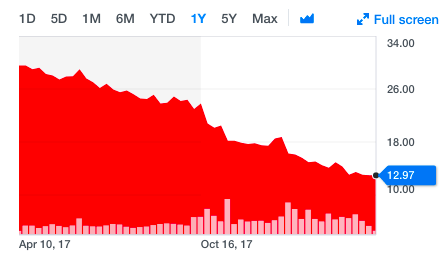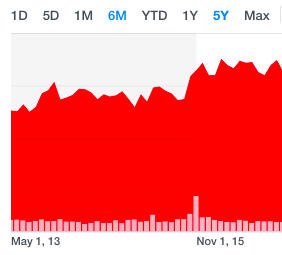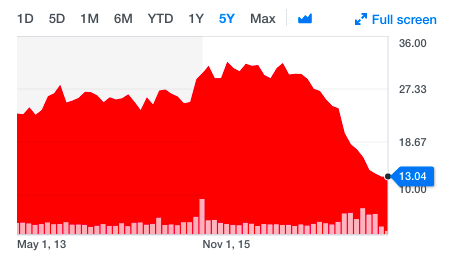Or even less! Sometimes you can acquire companies for less than (cash - total debt), i.e liquidation value. See my thread on Net net stocks as an example.
That is also something about modern finance that I could never had a grasp on. Why do they tell us that volatility = risk as a perfect equivalence?
-
I understand this in the context of a short period of time. Let’s say that you invest 1000 CHF today, in a quite fairly priced company stock. Because the price fluctuates around the fair value, you do not know if, for instance, in a week you will still have 1000 CHF. You may have more, you may have less. But so far it is just in accordance with the accounting principle of matching your assets with your liabilities : don’t invest in long term assets if you want the money back next week because you need it.
-
Now for risk vs volatility in itself. I think we can admit that risk is a definitive impairment of invested capital. Let’s see how volatility fits in this. Let’s compare the price action of stock of two companies :
- The stock of company A goes up 10%, then up 5%, then up 15%. The total return is 32%, and the standard deviation is 5.
- The stock of company B goes down 15%, then down 15%, and down 15% once again. That is a cumulated loss of 38%.
The volatility and standard deviation are zero!
Modern theory tells you that stock B is less riskier than stock A. In fact it tells you that it is almost risk free because volatility is zero! But of course your wallet says otherwise.
Warren Buffett has also a point when he explains his acquisition of the Washington Post :
He related the story of his acquisition of nearly 10 percent of the Washington Post Company for $80 million in 1974. According to Buffett, the entire company could easily have been sold for $400 million at the time and no expert would have questioned this valuation.
“Now, under the whole theory of beta and modern portfolio theory,” Buffett said, “we would have been doing something riskier buying the stock for $40 million than we were buying it for $80 million, even though it’s worth $400 million – because it would have had more volatility. With that, they’ve lost me.”
Buffett’s investment grew 25-fold over the next 15 years.
And finally, I have never seen an investor complaining that his stock is volatile on the way up. Only on the way down.
Sorry if I argue a lot with you but I do this for several reasons :
- You seem to be willing to learn
- I see that a lot of newcomers on the forum are drinking modern finance theory academia like gospel. Be wary that not everything that modern finance says is relevant. This is especially confusing because many of the evangelists of modern finance got a nobel for their work (Markowitz, Fama, Merton and Scholes,…). People at the time were happy to finally be able to put equations on finance and make it mathematically tractable. But as the old saying goes, “better be approximately right than precisely wrong”.
To come back to the initial topic :
- small caps are interesting because no institutional investor goes there, making the market a lot less efficient
- value stocks are interesting because as said earlier, it allows you to buy a dollar for 50 cents.
In my portfolio i invest exactly in small caps value stocks. But not with ETFs, and especially not with multifactor ETFs, for the reasons mentionned above.


